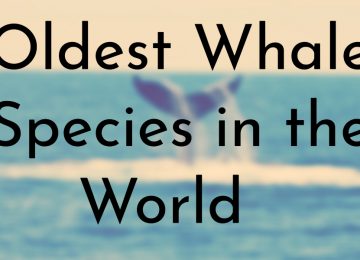Reptiles are some of the longest-living and oldest animals in the world. Depending on the species, some reptiles can live over 50 years or even 200 years! There have been numerous documented cases of individuals living over 100 years and the oldest reptile on this list was just 45 years away from turning 300 when it died. While researchers can never determine reptile’s age with 100% certainty, this is a list of the reptiles with some of the oldest estimated lifespans.
8. Common Caiman
Average Lifespan: 30 – 40; up to 60
Oldest Known Example: Unknown
Location: South America, Central America, and parts of the Caribbean
Species Name: Caiman crocodilus
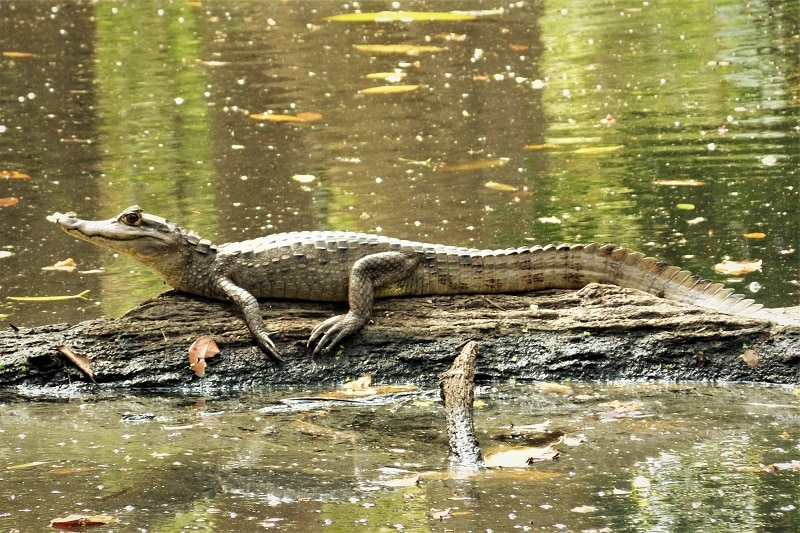 photo source: Flickr via gailhampshire
photo source: Flickr via gailhampshire
The common caiman, also known as spectacled or brown caiman, is a crocodilian reptile. While they look similar and have some shared characteristics, the common caiman should not be confused with a crocodile. Common caimans are small to medium-sized with a length between 1.5 to 3 meters (4.92 to 9.84 feet). They are native to northern South America, Central America, and certain parts of the Caribbean.
Not much is known about the lifespan of the common caiman but it is estimated that they live between 30 to 40 years – the oldest common caiman in the wild was believed to be about 60 years old. In captivity, common caimans only live for about 20 years.
7. Alligator Snapping Turtle
Average Lifespan: 20 to 70 years
Oldest Known Example: Unknown
Location: Exclusively in the United States, from northern Florida to eastern Texas and as far north as Iowa
Species Name: Macrochelys temminckii
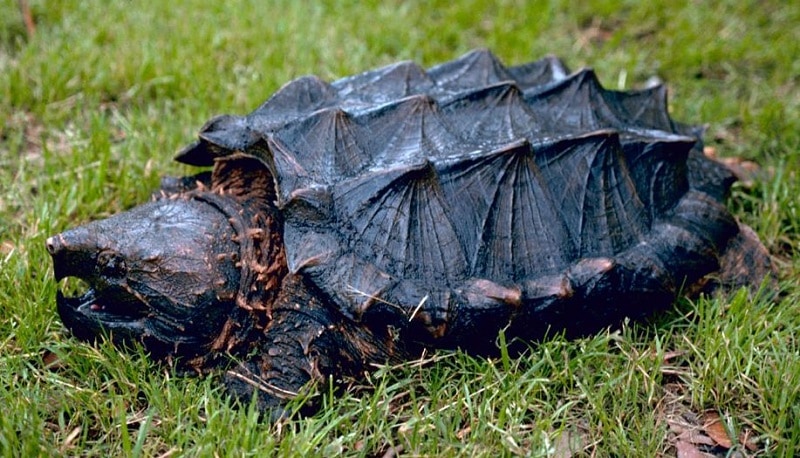 photo source: Wikimedia Commons via U.S. Fish & Wildlife Service
photo source: Wikimedia Commons via U.S. Fish & Wildlife Service
The alligator snapping turtle is one of the most interesting looking reptile and looks like it roamed with the dinosaurs. Alligator snapping turtles have spiked shells, prominent sharp beaks, and unlike other snapping turtles their eyes are on the sides of their heads. Additionally, alligator snapping turtles are the largest species of freshwater turtle and between 155 and 175 pounds (70 and 80 kilograms).
Alligator snapping turtles live exclusively in the United States and have no natural predators other than humans. Due to their limited range, the alligator snapping turtle population is small. For now, they’re not listed as endangered but they are a threatened species. Their numbers may continue to decline because of habitat loss and unregulated harvesting.
6. Blanding’s Turtle
Average Lifespan: 70 to 77+ years
Oldest Known Example: Unknown
Location: Native to Canada – Great Lakes region from southern Ontario to New York and Nebraska
Species Name: Emydoidea blandingii
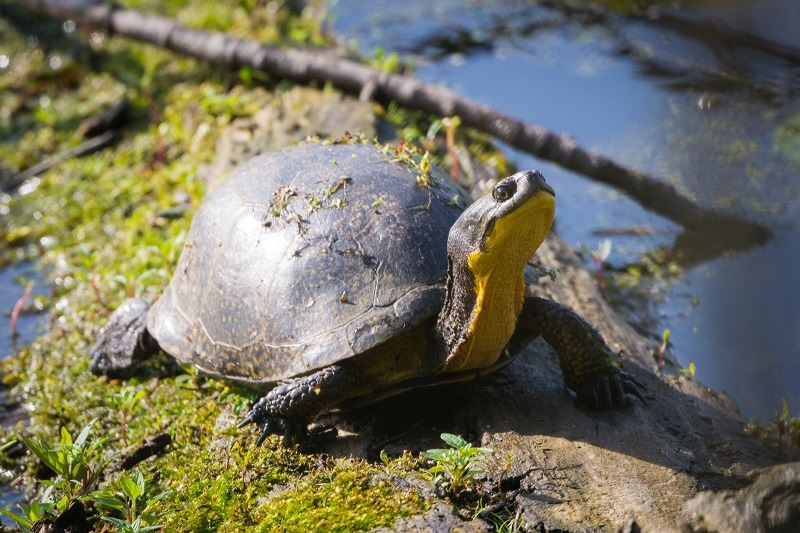 photo source: Wikimedia Commons
photo source: Wikimedia Commons
The Blanding’s turtle, which is native to Canada, is one of the oldest species of turtles with some individuals estimated to be over 75 years old. There has been research done on the longevity of Blanding’s turtles because they don’t show the typical signs of aging. In fact, older Blanding’s turtles are quite active, still reproduce, are adept at surviving, and lay more eggs than younger Blanding’s turtles.
Blanding’s turtles are semi-aquatic and prefer to live in wetlands. Although they like the water, Blanding’s turtles often come out to rest on logs. Unfortunately, Blanding’s turtles are popular pets and are often illegally traded. They are listed as endangered, but not in threat of extinction at the current time.
5. American Alligator
Average Lifespan: 30 to 50 years in the wild; 65 to 80 in captivity
Oldest Known Example: Muja – over 80 years old
Location: Southern United States in freshwater swamps, marshes, rivers, and lakes
Species Name: Alligator mississippiensis
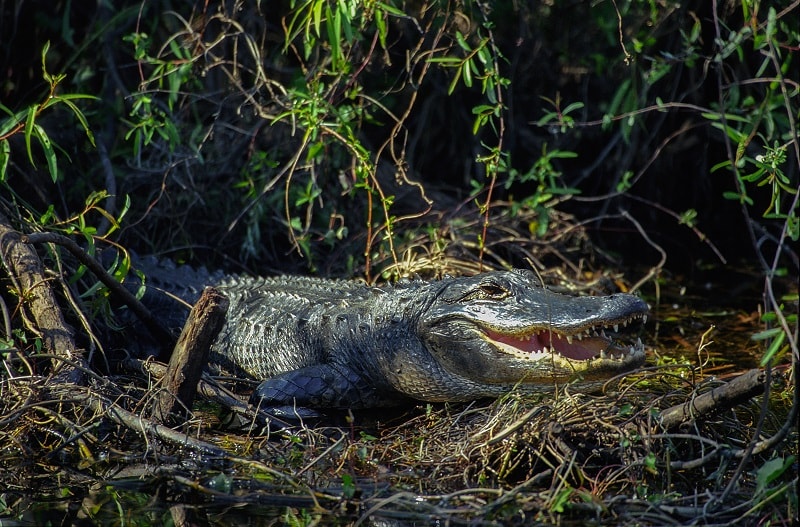 photo source: Wikimedia Commons
photo source: Wikimedia Commons
The American alligator, commonly called a gator in its native habitat of the southern U.S., is one of the largest living reptiles in the world. On average, male American alligators weigh about 1,000 pounds (453.60 kilograms) and can reach up to 15 feet (4.57 meters) in length. American alligators can live up to 80 years in captivity and up 50 years in the wild.
In the past, the American alligator was considered an endangered species and its numbers hit an all-time low around the 1950s. However, within just a few decades following strong conservation efforts, American alligators were declared fully recovered in 1987. Today, the American alligator population is over one million, making theirs one of the greatest conservation success stories ever.
4. Green Sea Turtle
Average Lifespan: 80+ years
Oldest Known Example: Unknown
Location: All temperate and tropical waters around the world
Species Name: Chelonia mydas
 photo source: Wikipedia
photo source: Wikipedia
While its difficult to figure out how long sea turtles live, it is believed that the green sea turtle is the oldest sea turtle species with an estimated lifespan of 80+ years. Green sea turtles are also the second largest sea turtles in the world, just behind the leatherback. Green sea turtles can grow up to 5 feet (1.52 meters) and weigh more than 500 pounds (226.796 kilograms).
Green sea turtles have a unique diet that changes significantly during its life. Young green sea turtles are omnivorous and will eat crabs, jellyfish, and sponges; adult green sea turtles are strictly herbivores and mostly feed on sea grasses and algae. Like all sea turtles, green sea turtles are listed as endangered and there is a real possibility that green sea turtles can go extinct in the wild in the near future.
3. Nile Crocodile
Average Lifespan: 45 – 100 years
Oldest Known Example: Henry – 117 years old
Location: Sub-Saharan Africa, Nile basin, and Madagascar
Species Name: Crocodylus niloticus
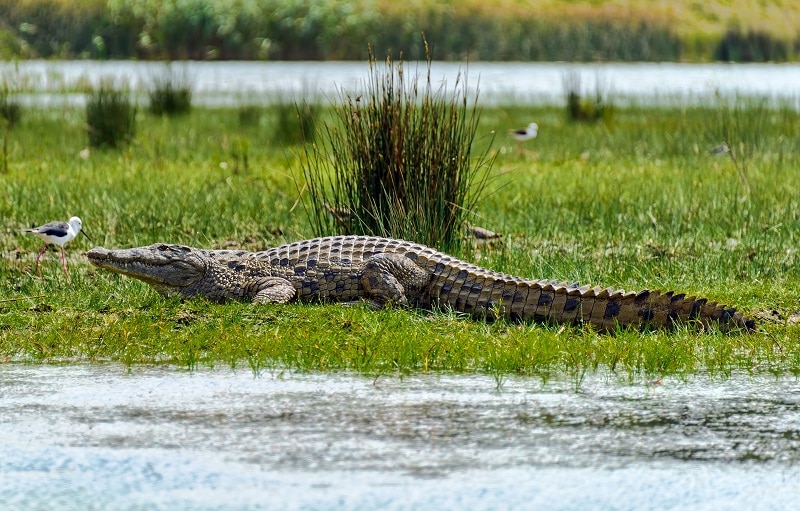 photo source: Wikimedia Commons
photo source: Wikimedia Commons
The Nile crocodile is the second largest crocodilian, after the saltwater crocodile, and the largest freshwater predator in Africa. On average, Nile crocodiles are about 16 feet (4.88 meters) long and weigh about 500 pounds (226.796 kilograms). However, Nile crocodiles can grow up to 20 feet (6.096 meters) and weigh more than 1,650 pounds (748.43 kilograms)! Due to their large size, Nile crocodiles tend to have long lifespans and can live up to 100 years.
Nile crocodiles are such fierce predators that they have earned a reputation for killing humans. It is estimated that about 200 people die annually from a Nile crocodile attack. Recently, a few Nile crocodiles have been found in Florida, causing some alarm. Although Nile crocodiles are much more aggressive than American crocodiles and alligators, so far there is no evidence that the Nile crocs in Florida are reproducing.
2. Tuatara
Average Lifespan: 60 – 100+ years
Oldest Known Example: Henry – estimated age of 111
Location: Islands in the Cook Strait of New Zealand
Species Name: Sphenodon punctatus
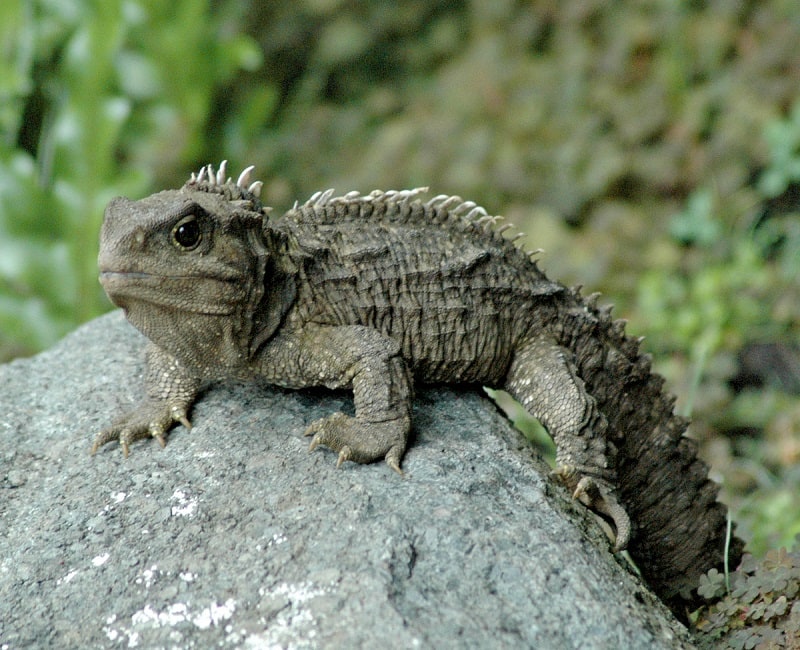 photo source: Wikimedia Commons
photo source: Wikimedia Commons
The tuatara, which is often called a “living dinosaur”, is one of the most interesting animals in the world. They have one of the slowest growth rates of any reptile and will keep growing until they’re about 35 years old. Tuataras have an average lifespan of 60 years, but many specimens are estimated to be over 100 years old. Tuataras are typically classified as one species, but in the past the Brothers Island tuatara was considered a separate species – since 2009 all tuataras belong to one group, Sphenodon punctatus.
While tuataras may not actually be dinosaurs, they are the last surviving member of a group of reptiles called Sphenodontia that lived over 200 million years ago. Like many of the reptiles on this list, the tuatara is an endangered species and some of its biggest threats are poaching, habitat destruction, rats, mice, and low genetic diversity.
1. Giant Tortoise
Average Lifespan: 150+ years – up to 250+ years
Oldest Known Example: Adwaita – estimated age of 250 – 255 years old
Location: Aldabra Atoll and Fregate Island in the Seychelles; and the Galapagos Islands
Species Name: Chelonoidis nigra (Galapagos giant tortoise); and Aldabrachelys gigantea (Aldabra giant tortoise)
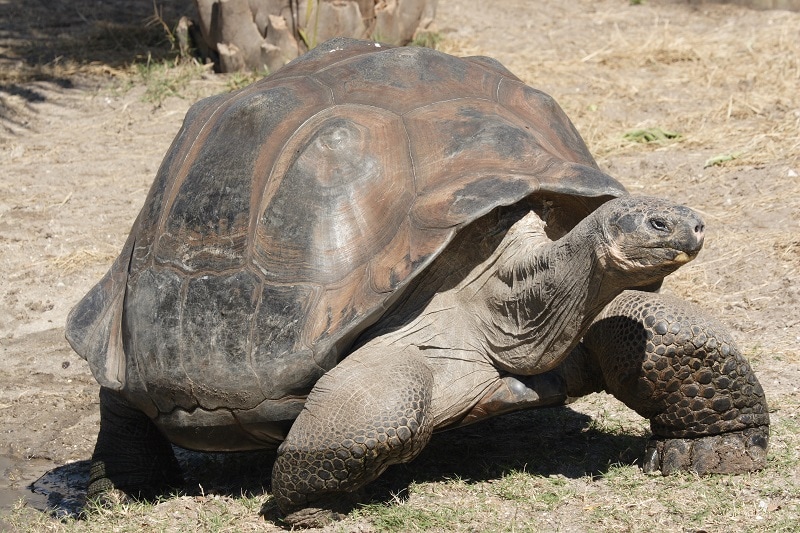 photo source: Wikimedia Commons
photo source: Wikimedia Commons
With an average lifespan of over 150 years, giant tortoises are the oldest reptiles in the world. Not only are giant turtles the oldest reptiles, but they are considered the longest lived vertebrae on record. There are several tortoises on record that have lived well beyond 150 years and even over 200 years. Today, only two main groups of giant tortoises exist, the famous tortoises of the Galapagos Islands and the Aldabra giant tortoise.
As their name implies, giant tortoises are massive creatures and some specimens can reach over 550 pounds (249.48 kilograms). While giant tortoise numbers are low, there is evidence from the fossil record that they used to be abundant around the world. Unfortunately, giant tortoises are some of the most endangered animals in the world, but recent conservation efforts have helped the population increase.






